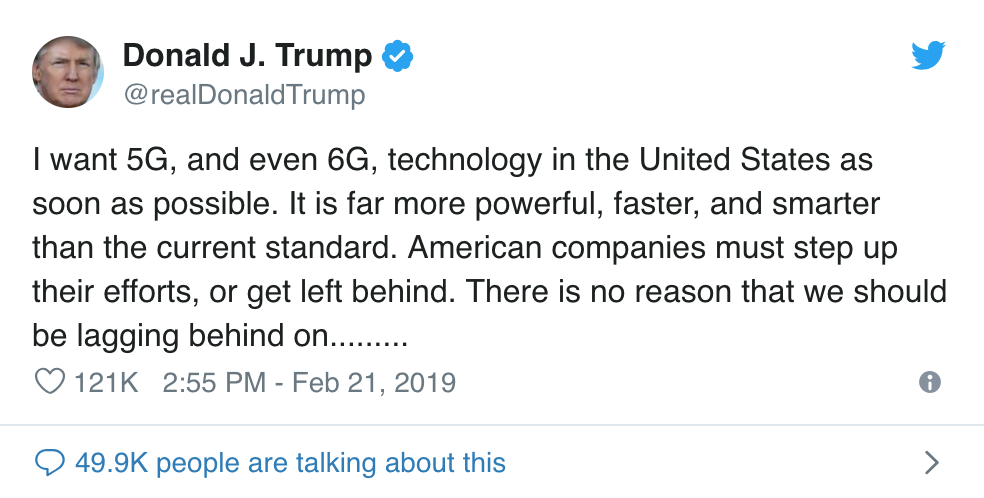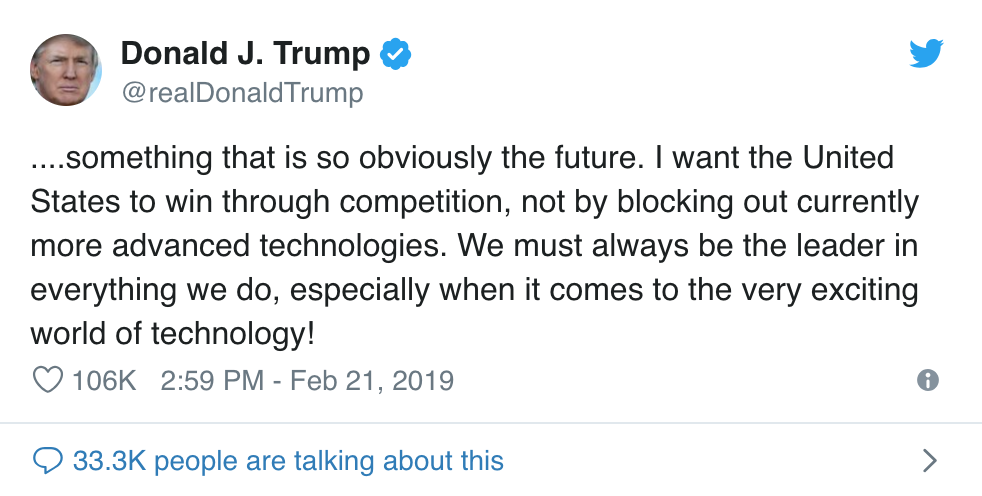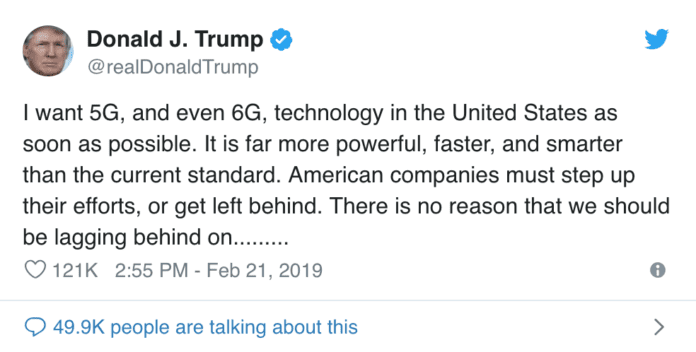President calls for US leadership in 5G; hints at Huawei?
President Donald Trump, who used a Samsung Galaxy s3 as late as 2017 and is known for having “the best words,” apparently has strong opinions not only about burgeoning 5G cellular technology but also the non-existent 6G.
In a pair of tweets posted on February 21, Trump wrote: “I want 5G, and even 6G, technology in the United States as soon as possible. It is far more powerful, faster, and smarter than the current standard. American companies must step up their efforts, or get left behind. There is no reason we should be lagging behind on…

He continued: “something that is so obviously the future. I want the United States to win through competition, not by blocking out currently more advanced technologies. We must always be the leader in everything we do, especially when it comes to the very exciting world of technology!”

Depending on your point of view, there’s very little or quite a bit to unpack there, so here goes nothing.
To that first tweet, America is a leader in 5G. With the exception of the three Korean operators who used a joint deployment model to turn up 5G in early December, AT&T and Verizon were first to offer commercial 5G services and have major expansion plans. Similarly, Sprint and T-Mobile US are both rapidly pursuing commercialization of 5G networks.
In terms of American companies elsewhere in the ecosystem stepping up their efforts, Qualcomm, based in San Diego, California, is the major player in 5G chips for smartphones and other devices. Intel, also a U.S. company, is working on commercial 5G silicon in earnest. For actual devices, Apple probably won’t have a 5G-compatible iPhone (assuming they follow that naming convention) until next year.
For network infrastructure, there aren’t any major vendors headquartered in the U.S. Ericsson is a Swedish company, Nokia is Finnish, Samsung is Korean and Huawei and ZTE are Chinese, which helps us segue into dissecting the second tweet.
Trump has taken an aggressive, and harmful, posture toward trade with China. Simultaneously, his administration has taken a hardline stance against Huawei and ZTE equipment being used in domestic 5G roll outs ostensibly for the purposes of protecting national security. In fact, U.S. officials asked Canadian counterparts to arrest Huawei’s CFO, also the founder’s daughter, related to allegations the company violated sanctions against Iran.
Despite not having much of a market in the U.S., Huawei is a dominant force in telecom network gear and devices. It’s the leading global network infrastructure vendor in terms of sales.
So, through the lens of the trade war and threats to outright ban Huawei and ZTE from doing business in the U.S., is Trump suggesting that U.S. network infrastructure vendors that don’t exist should be more competitive against Huawei through R&D efforts rather than by blocking the company from doing business in the U.S, a charge being led by his own administration? Who knows.
As for 6G, I can’t even. Trump’s thoughts on time travel and using dark matter for interstellar propulsion were not immediately available.

